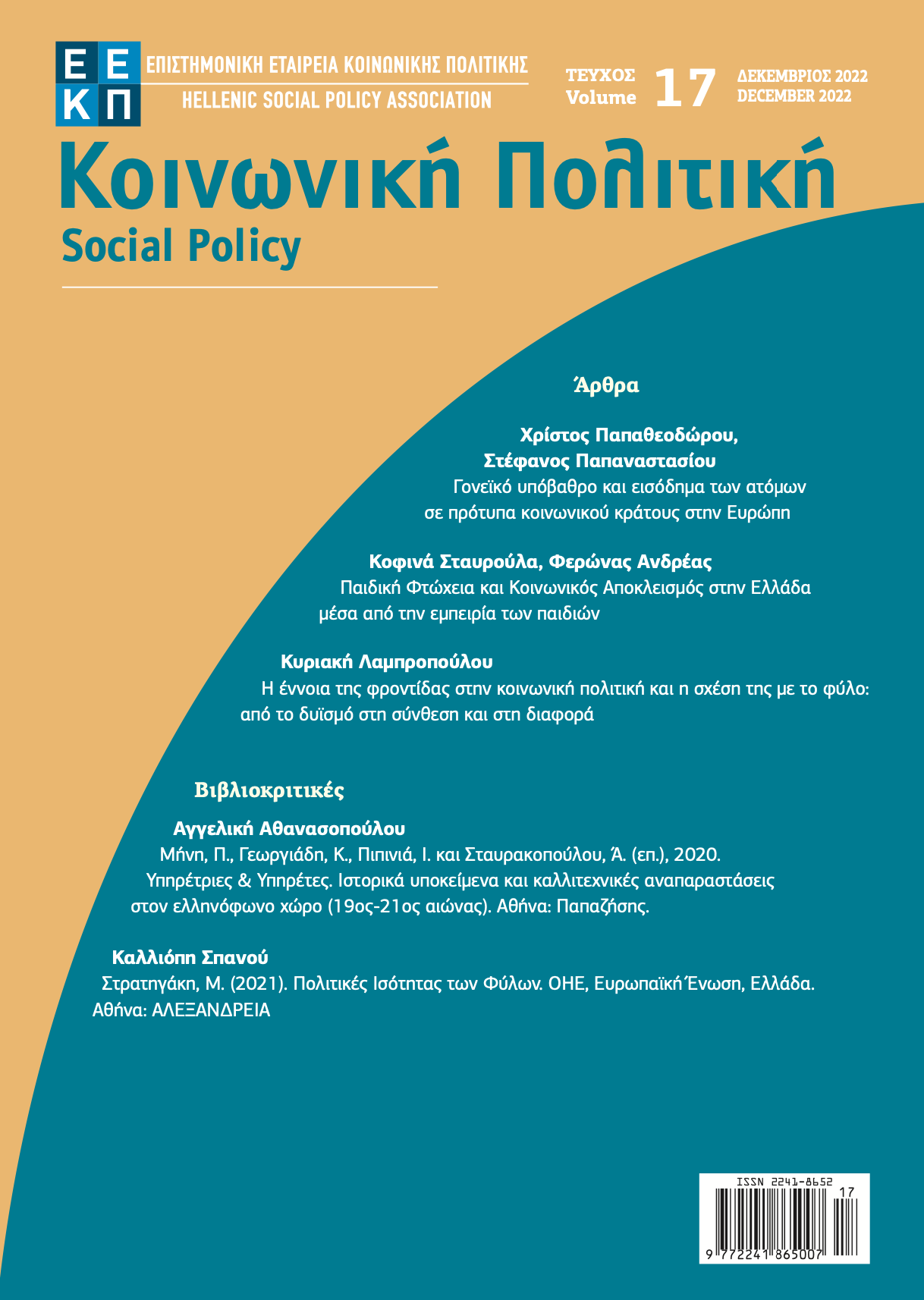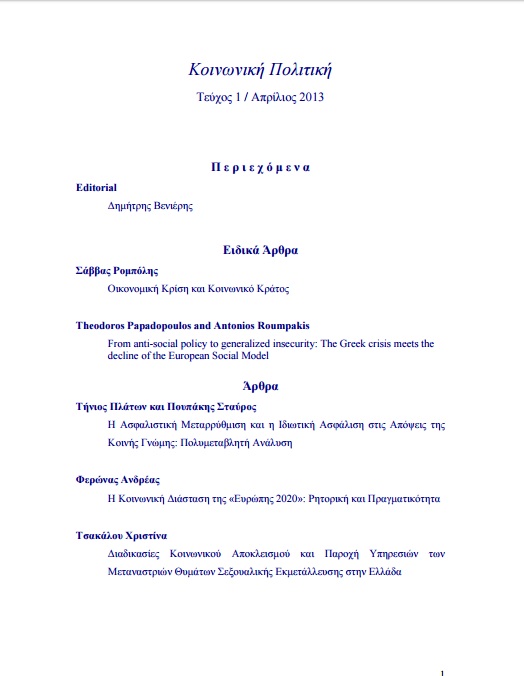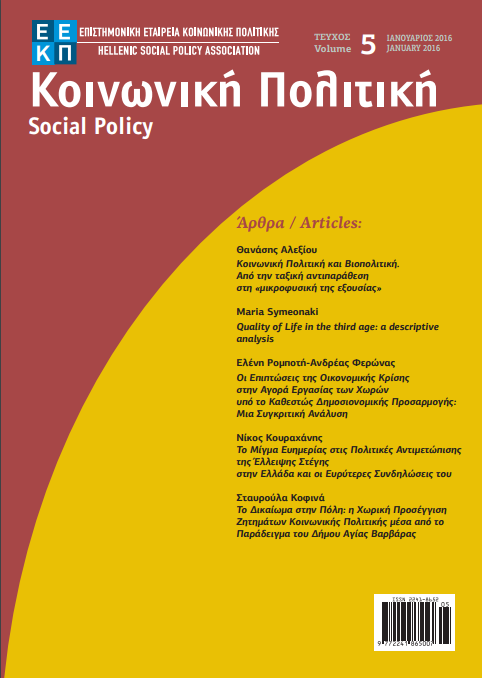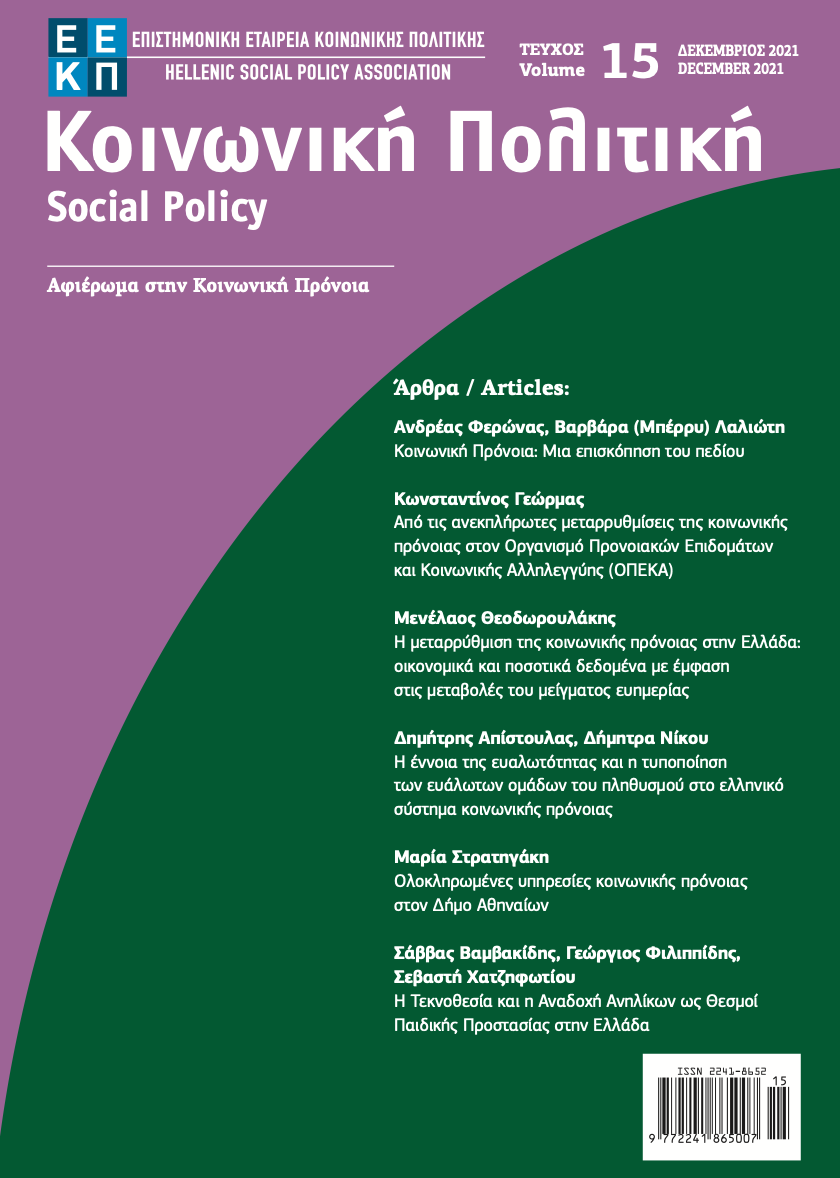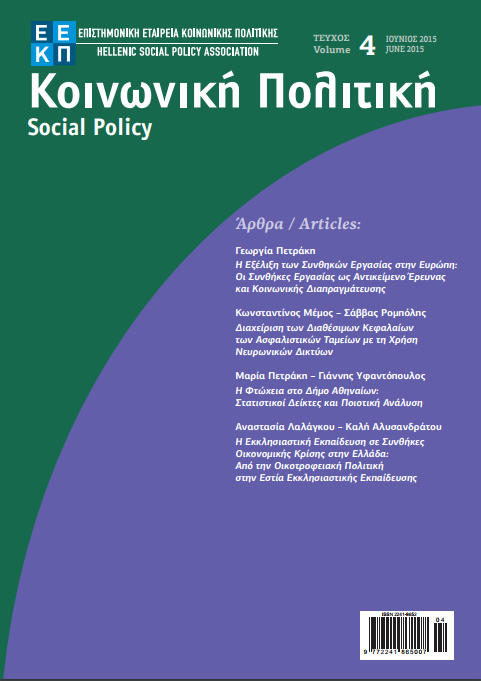Welfare Regimes and Homelessness. What Kind of Relationship?

Abstract
This article explores the relationship between the broader structure and characteristics of welfare regimes with the phenomenon of homelessness. To this end, the first section provides a review of the literature on welfare regimes and their connection with the phenomenon of homelessness. The second section contains the empirical investigation, in the form of a comparative analysis of primary statistical data and a qualitative analysis of reports and documents relating to national strategies on homelessness in six countries, representatives of the respective welfare regimes. What comes out from the analysis is a confirmation of the difficulty to prove a linear relationship between welfare regimes and homelessness. The availability of reliable and comparable primary data is a prerequisite for further exploration of a hitherto unexplored problem of extreme poverty and social exclusion.
Article Details
- How to Cite
-
Φερώνας Α., & Κουραχάνης Ν. (2017). Welfare Regimes and Homelessness. What Kind of Relationship?. Social Policy, 6, 21–44. https://doi.org/10.12681/sp.10879
- Issue
- Vol. 6 (2016)
- Section
- Articles

This work is licensed under a Creative Commons Attribution 4.0 International License.
Authors who publish with this journal agree to the following terms:
Authors retain copyright and grant the journal right of first publication with the work simultaneously licensed under a Creative Commons Attribution Non-Commercial License that allows others to share the work with an acknowledgement of the work's authorship and initial publication in this journal.
Authors are able to enter into separate, additional contractual arrangements for the non-exclusive distribution of the journal's published version of the work (e.g. post it to an institutional repository or publish it in a book), with an acknowledgement of its initial publication in this journal.
Authors are permitted and encouraged to post their work online (preferably in institutional repositories or on their website) prior to and during the submission process, as it can lead to productive exchanges, as well as earlier and greater citation of published work.



